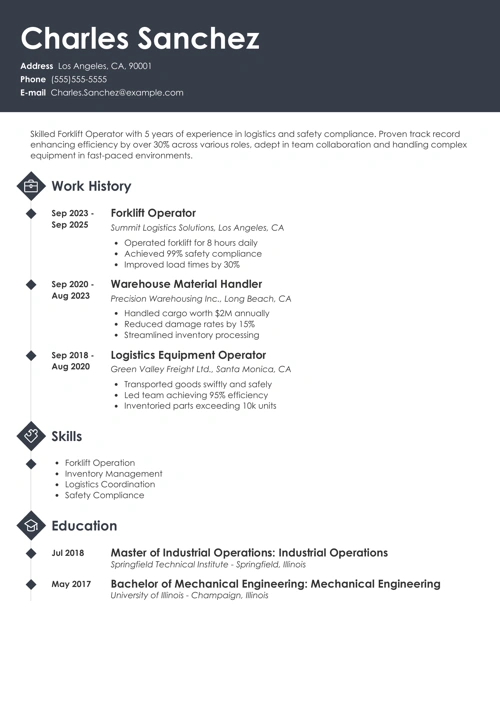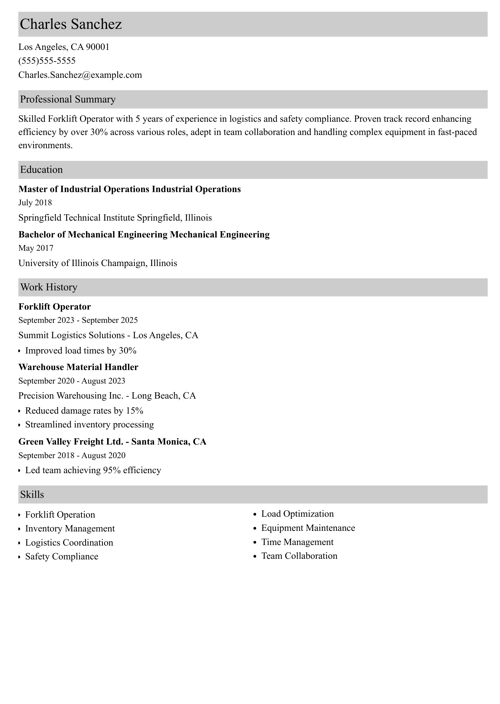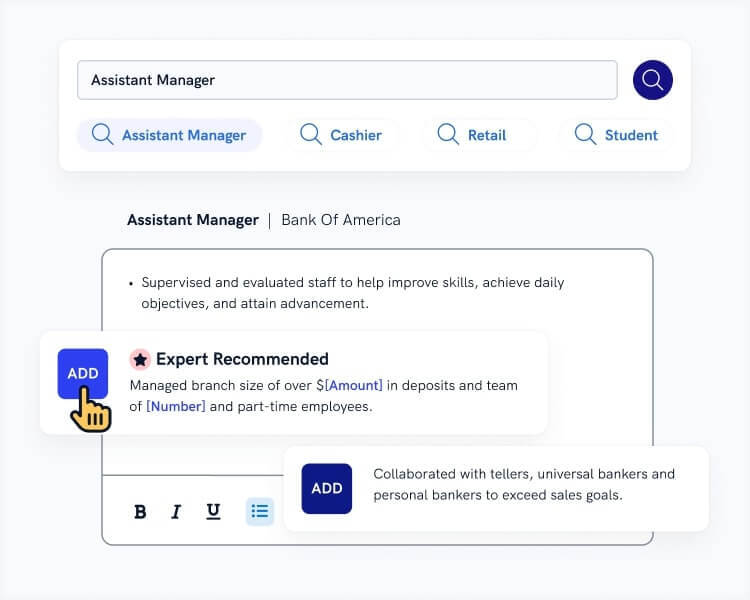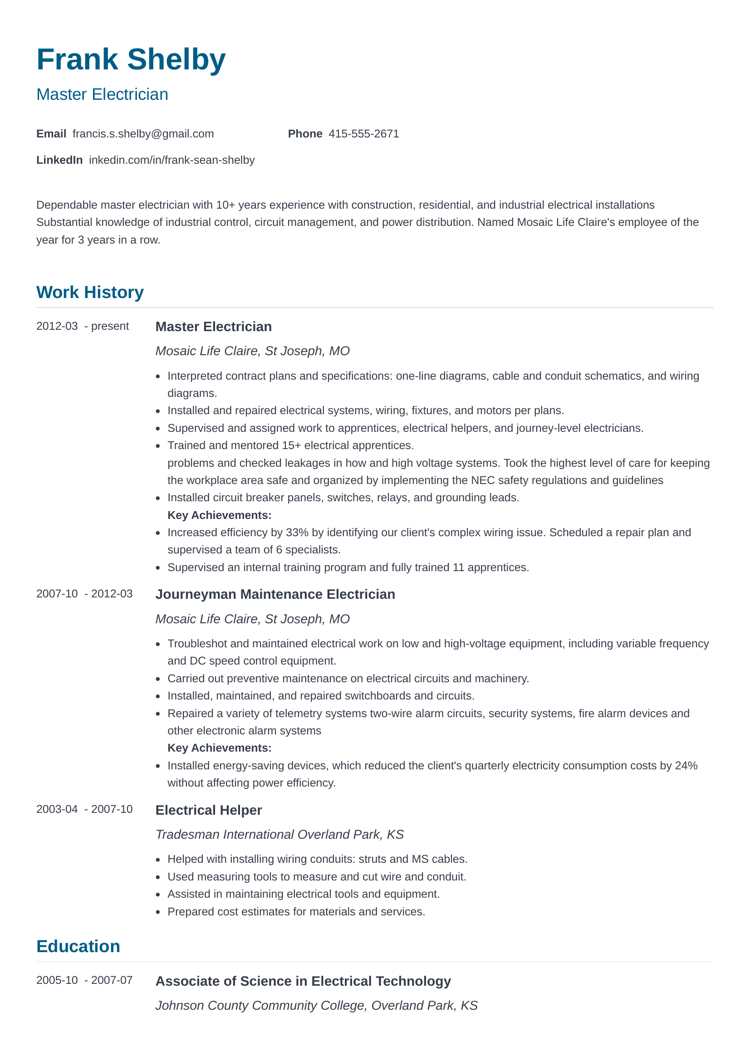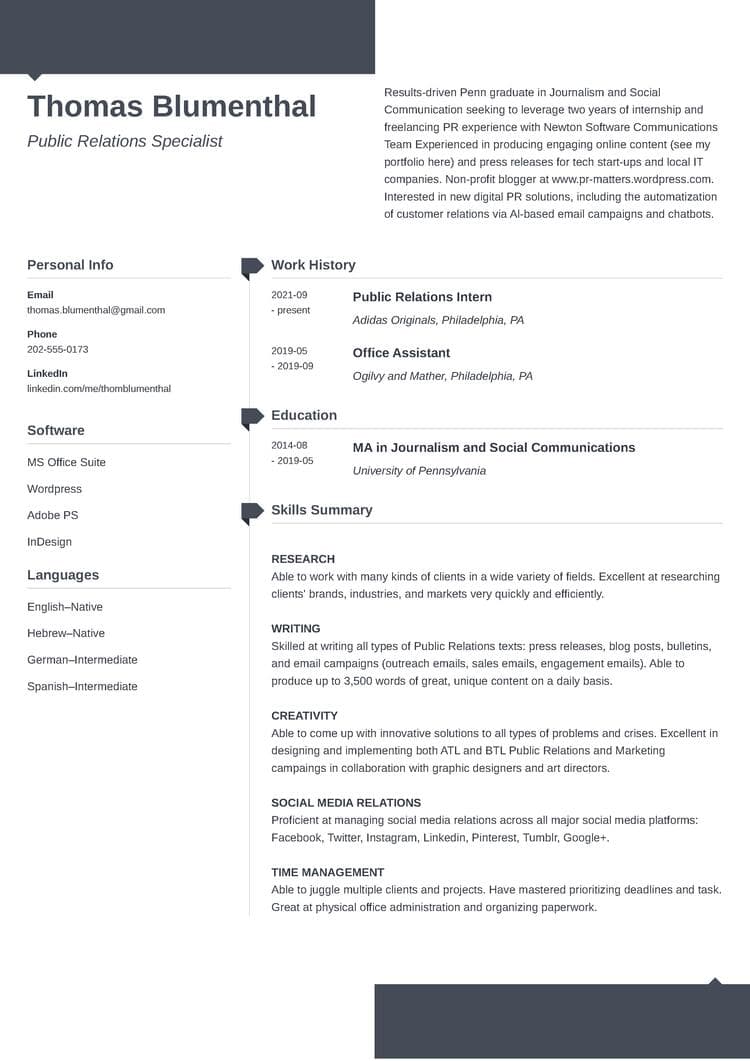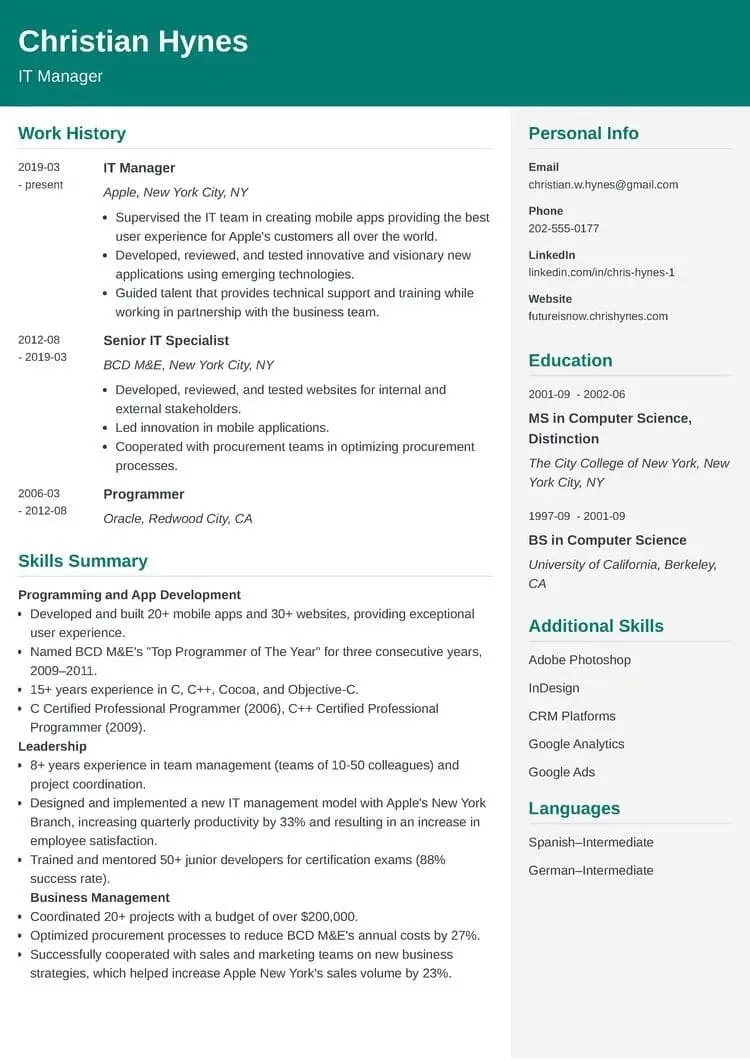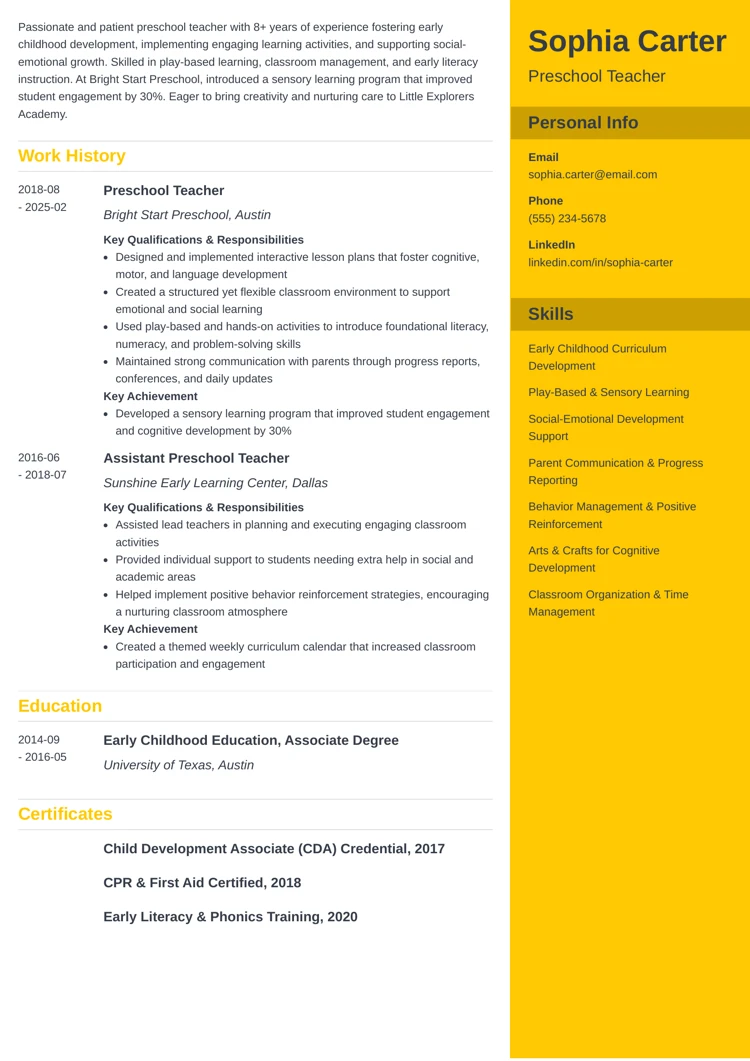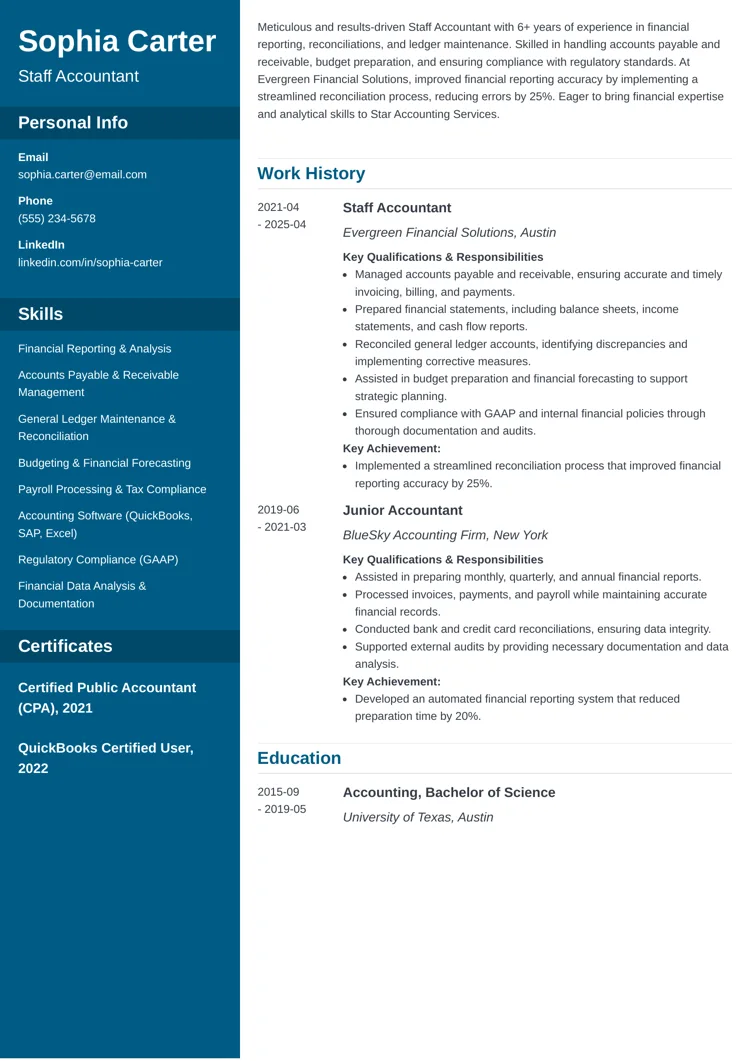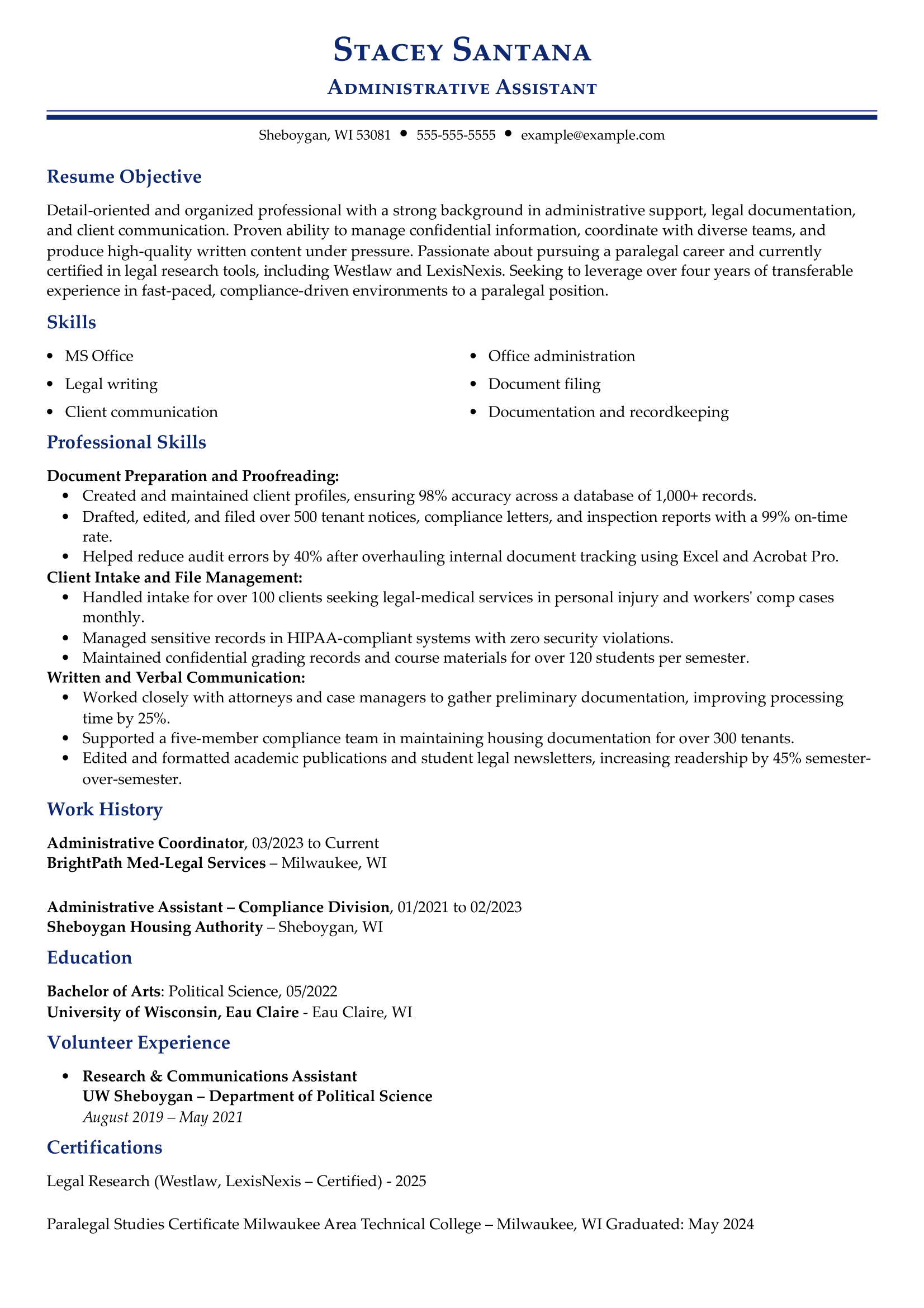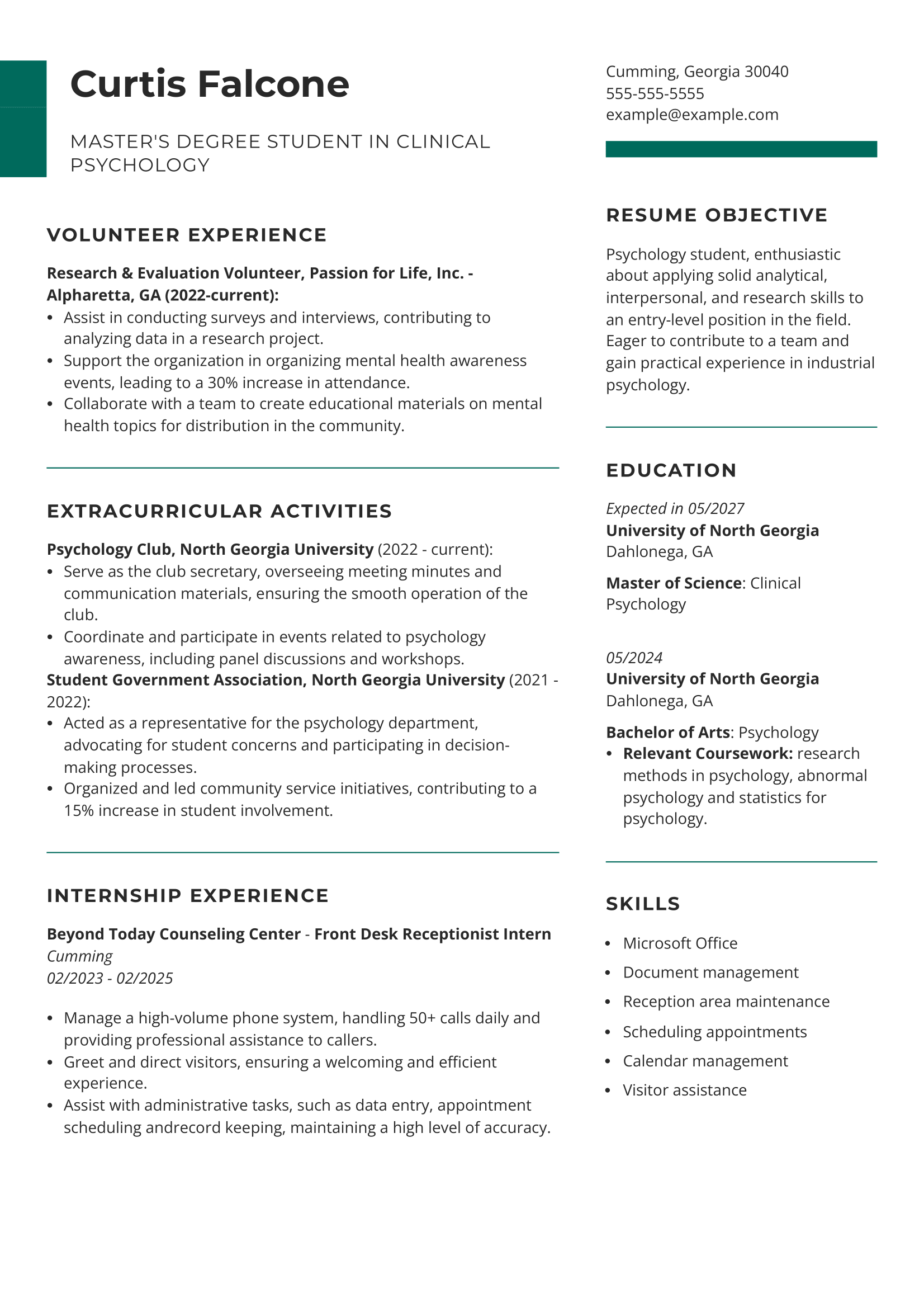Your work experience section is more than just a list of jobs—it’s the story of your career. And like any good story, it needs a strong plot.
Employers want a clear and engaging narrative that shows how your past roles prepared you for this one. Keep reading to learn how to write your work experience, step by step, and with examples!
Want to save time and have your resume ready in 5 minutes? Try our resume builder. It’s fast and easy to use. Plus, you’ll get ready-made content to add with one click.
Sample resume work experience section made with our resume builder.
One of our users, Chris, had this to say:
You cannot go wrong with Zety. The company does best at enhancing your resume and helping market yourself better to land the job you love.
Before you dive deeper, look at the video created by our career expert Caio on how to show work experience on your resume:
How to Describe Work Experience on Your Resume
Many job seekers struggle with what to write in a resume for work experience—should you list every task, or just the highlights? The good news is, there's a simple formula you can follow.
Let's go over it, step by step:
Step 1: Gather your information
The best way to start writing your resume is to get organized! Focus on collecting these details:
- Your past employers and job titles, with their respective responsibilities
- Everything you accomplished in each job
- Key skills you learned
- Any awards, promotions, or special recognitions from your current and past employers
Step 2: List your work experience in reverse-chronological order
Organize your job roles starting with your most current one and work your way back. Writing your work experience in this order helps hiring managers better understand your career growth.
If you're wondering how much work experience to include on your resume, focus on the last 10 years. If you have more than 10 years of experience, ensure that each role is relevant to your target job.
Step 3: Add key details for each position
Each job entry must include the following:
- Your job title
- The company or organization's name
- City and state
- Employment dates
For example:
Customer Support Agent | Casanova Real Estate
Boston, MA | Aug. 2020 - Nov. 2025
Step 4: Highlight your duties and achievements
When it comes to describing each job, your bullet points are the most important. While it's fine to list a few of your main duties, achievements should always take the spotlight. Duties only show what you were supposed to do, while achievements prove how well you did it.
Think about moments where you went beyond expectations—did you meet tough deadlines, boost sales, improve processes, or earn recognition from your boss? Those are the details hiring managers want to see.
Let's see how adding accomplishments can improve your job entry:
| GOOD |
|---|
Administrative Assistant | Greenfield Consulting
|
While this version tells employers what you did, it lacks impact and real results.
| BETTER |
|---|
Administrative Assistant | Greenfield Consulting
|
This work experience resume sample highlights results, improvements, and recognition—exactly what employers want to see.
Pro tip: Zety’s Resume Builder generates ready-made content suggestions to help you describe your specific work experience, allowing you to easily level up your work history in no time.
Here’s a handy table you can reference in the future:
Information needed | Past jobs, employers, skills, duties, and achievements |
Order of jobs | Reverse chronological—from your most current job to your oldest job |
Details to include | Job title, employer’s name, location, and employment dates |
Duties or achievements? | Achievements over duties, unless there are no outstanding accomplishments to showcase |
Making a resume with our builder is incredibly simple. Follow our step-by-step guide, use ready-made content tailored to your job, and have a resume ready in minutes.
When you’re done, our ATS Resume Checker will score your resume and show you exactly how to improve it.
Where to Place Your Work Experience
Every part of your resume has a purpose, and that includes where you place your work history section. The right spot depends on your resume format, since the layout you choose shapes how hiring managers see your career story.
There are three main resume formats to consider:
Chronological resume format
The chronological resume puts your work experience front and center, making it the go-to format for job seekers with a solid career history. In this layout, your work history appears immediately after your professional summary and typically occupies the majority of the page.
The goal is simple: show employers how your career has grown over time. By focusing on your work history, you highlight your expertise, achievements, and the path that brought you to where you are today.
Check out this example:
Functional resume format
The functional resume shifts the spotlight away from work history and onto your skills. Instead of listing jobs in detail, it groups your abilities into categories—like leadership, customer service, or technical expertise.
This format works best for career changers, recent graduates, or anyone with gaps in their employment. By focusing on what you can do rather than where you've worked, it helps you prove you've got the right skills for the job, even if your career path isn't traditional.
As you'll see in this example, the work history is still at the top of the page but has minimal details. The skills section is the main focus:
Combination resume format
The combination resume blends the best of both worlds. It provides space to showcase a detailed work history while also offering an in-depth look into your skills.
This format is beneficial if you want to highlight specific strengths without leaving out the context of your career journey. It’s an excellent option for professionals with mid-level experience who also want to emphasize specialized skills or accomplishments.
See how this job seeker effectively showcased both their skills and career history:
Pro tip: Deciding how to organize your resume sections can be a hassle. Use Zety's preformatted resume templates to easily showcase your strengths, whether it's your skills or work history.
How to Add Nontraditional Experience
Not all experience comes from a 9-to-5 job. Internships, volunteer work, freelance projects, side hustles, or even school projects can show employers that you’ve gained valuable skills.
The key is to treat these experiences like traditional jobs: highlight your role, responsibilities, and achievements. Here are some ways to include nontraditional experience on your resume:
- Internships or apprenticeships: Mention specific software, processes, or industry knowledge you developed during this experience, such as CRM systems or creating marketing campaigns.
- Volunteer work: Showcase skills and achievements, not just the fact that you volunteered. For example, “led a fundraising campaign” or “organized community events.”
- Freelance or contract projects: Treat each project as a mini-job. Include your title, client (if appropriate), and measurable outcomes.
- School or personal projects: Include projects that demonstrate relevant skills, such as coding projects, research, or creative portfolios.
- Side hustles: Show initiative, time management, and results, especially if the work relates to your target job.
Take a look at this example:
Volunteer Event Coordinator | City Youth Outreach
Chicago, IL | Jan. 2022 – Present
- Planned and executed five community events, attracting over 500 participants and raising $10,000 in donations.
- Coordinated a team of 20 volunteers, improving event setup efficiency by 25%.
- Managed communications with local sponsors and organizations to secure resources and support.
Tips to Elevate Your Work History
Small changes can turn a basic list of duties into a compelling showcase of your skills, achievements, and potential. Here are some proven tips to elevate your work history:
- Use action-oriented language: Begin each bullet with a strong action verb like “led,” “developed,” “implemented,” or “increased” to grab attention.
- Quantify whenever possible: Use numbers, percentages, or other measurable outcomes to show the difference you made.
- Include relevant keywords: Incorporate keywords from the job description to pass applicant tracking systems (ATS) and appeal to hiring managers.
- Keep it concise and easy to scan: Use short, clear bullet points and avoid long paragraphs.
- Show growth over time: Highlight promotions, increasing responsibilities, or new skills acquired to demonstrate career progression.
- Tailor for each application: Adjust your work experience to emphasize the skills and accomplishments most relevant to each job you apply for.
Work Experience Resume Samples
These resume examples can help you see how you can showcase your career history and progression:
Preschool teacher
Staff accountant
Administrative assistant
Psychology student
Key Takeaways
Keep these points in mind as you build or update your resume:
- Gather all relevant information about your past roles, including job titles, responsibilities, achievements, skills, and recognitions.
- List your work experience in reverse-chronological order to showcase career growth.
- Highlight achievements in your bullet points, using duties only when necessary.
- Use numbers, results, and measurable outcomes to make accomplishments stand out.
- Don’t overlook nontraditional work experience; it can demonstrate valuable skills.
- Consider your level of experience and choose a resume format that will structure your resume sections accordingly.
About Zety’s Editorial Process
This article has been reviewed by our editorial team to make sure it follows Zety's editorial guidelines. We’re committed to sharing our expertise and giving you trustworthy career advice tailored to your needs. High-quality content is what brings over 40 million readers to our site every year. But we don't stop there. Our team conducts original research to understand the job market better, and we pride ourselves on being quoted by top universities and prime media outlets from around the world.
